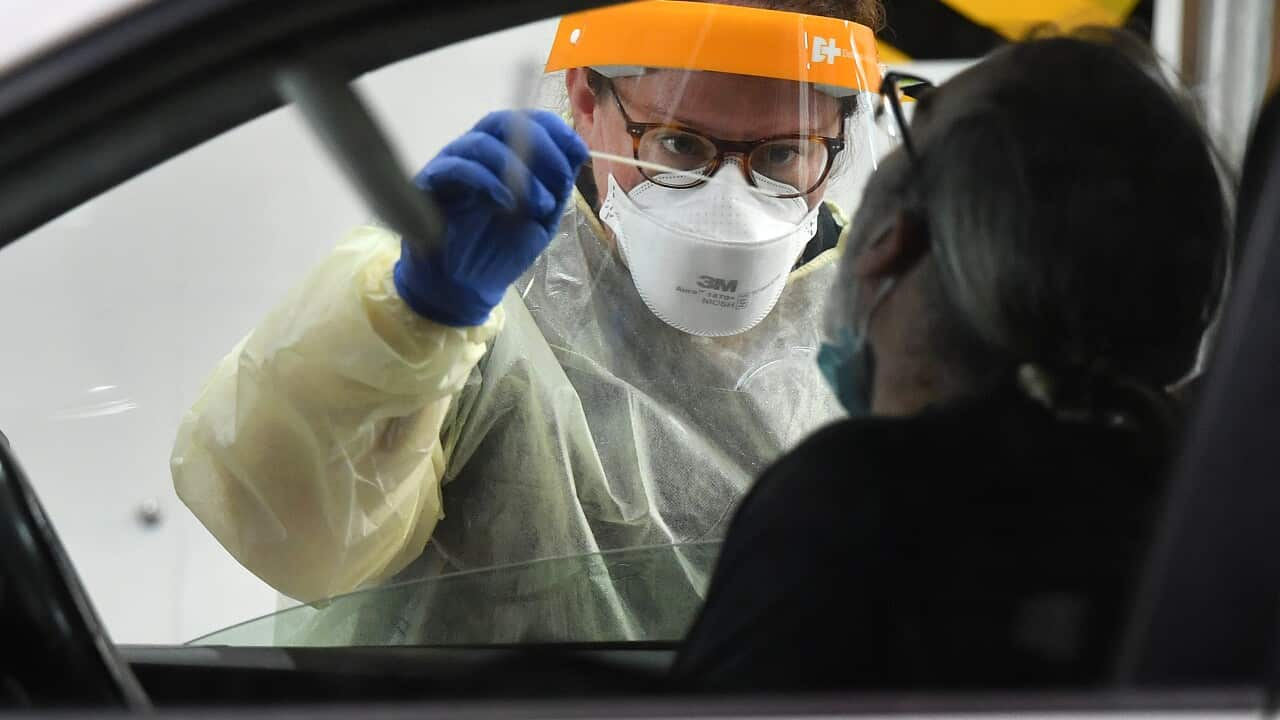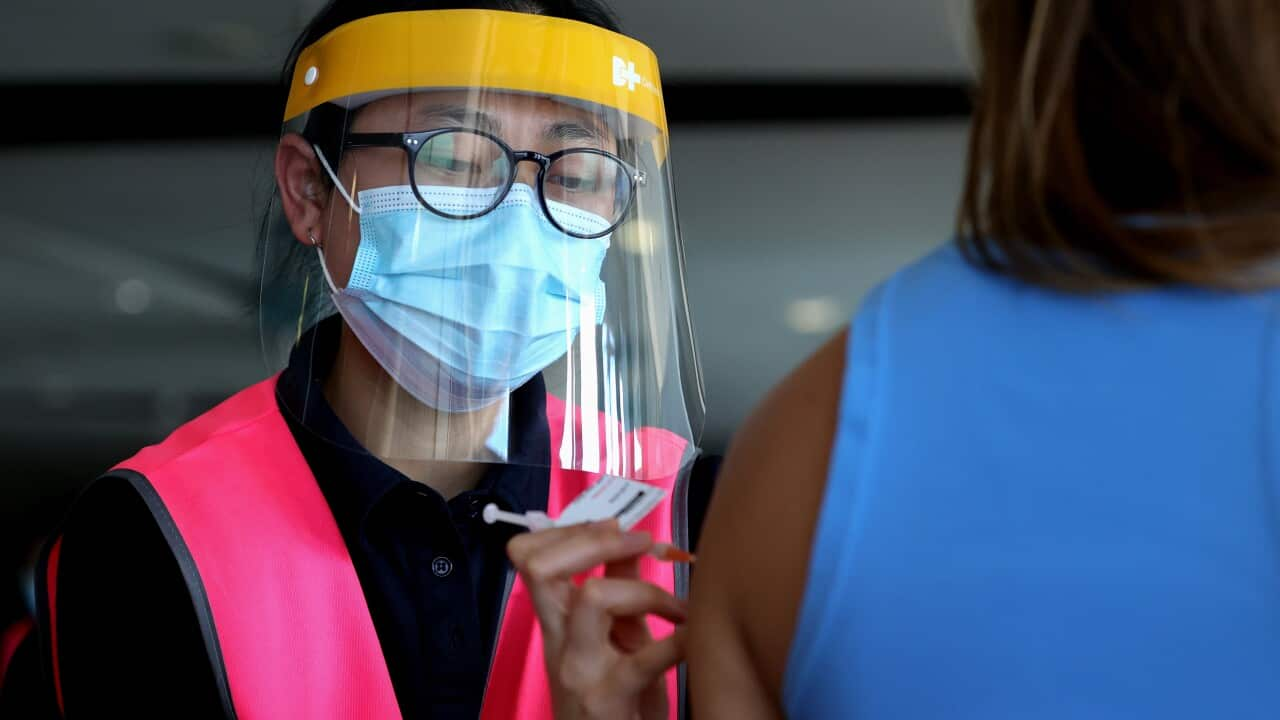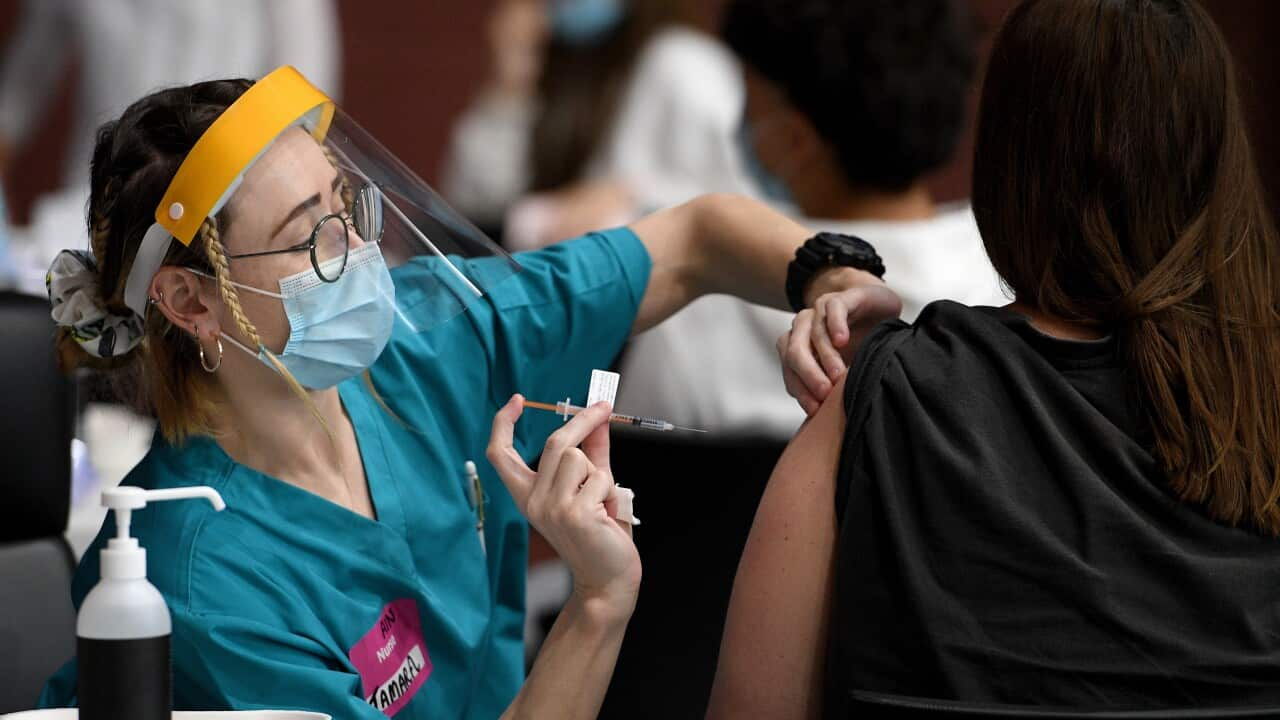Australia's COVID-19 case numbers are surging again as the Omicron BA.2 sub-variant spreads across the nation, and epidemiologists fear the growing outbreak could again put the nation's healthcare system under strain.
University of South Australia epidemiologist Adrian Esterman told SBS News we are in the midst of "basically a second wave" of Omicron, this time driven by BA.2, not BA.1.
Currently, an estimated 60 per cent of COVID-19 infections in Australia are from the BA.2 variant, 39 per cent from BA.1, and one per cent from other variants including Delta.
The 'effective reproduction' or Reff number has also been rising, which means "people infected with COVID-19 have been infecting a greater number of people", explained epidemiologist Nancy Baxter, head of the Melbourne School of Population and Global Health at the University of Melbourne.
"In the past when the outbreak was shrinking one person was transmitting it to less than one person on average. Now it's definitely above one. In many states it's gone to 1.2, which means that the outbreak is gaining momentum now," Professor Baxter said.
"In NSW a month ago, we had cases per day as low as 5,000. Today, we have around 24,000. So there's clearly something different happening.
"We're starting to see hospital numbers and ICU numbers go up, and we know that those metrics trail the rise in cases. So we'd expect hospitalisations to be trending upwards as well and will continue to do so until after the peak is reached."
What’s driving transmission?
The BA.2 variant is more infectious than the original Omicron strain, but eased restrictions and changing behaviour are also contributing to its spread, Professor Baxter said.
"Our behaviour has changed because we've lifted restrictions, lifted protections, so we have people going back to work, we've lifted mask mandates, changed the close contact rules and these types of things. All of these things have driven opportunities for transmission," she said.
Vaccines and boosters, mask-wearing, improving ventilation in schools and workplaces, and normalising flexible work arrangements that encourage workers to stay home when unwell or symptomatic remain key to limiting transmission, Professor Baxter said.
The BA.2 wave is expected to peak in April, she said, but the lack of protection from restrictions and mask mandates may lead to a "higher peak" and a "more prolonged wave” than seen for BA.1.
How is it impacting schools?
The rise in cases in the community is causing large staff and student absences in schools, NSW Teachers' Federation senior vice president Amber Flohm told SBS News.
Ms Flohm said there had been a noticeable increase "over the last few weeks" in the volume of members contacting the Teachers' Federation to say they have COVID-19.
The increase in cases, combined with the teacher shortage NSW was already experiencing before the pandemic has created "a perfect storm," she said.
"There's no doubt that for teachers who are already suffering under a crippling workload, they have yet again taken on additional classes, additional roles, forgone many breaks, in order to try and keep the education continuity for their students," she said.
Ms Flohm said in some cases, schools are being forced to "collapse" certain classes and support programs due to staff shortages.

Students arrive at Carlton Gardens Primary School in Melbourne. Source: AAP
"What it really means is a group of students with somebody overseeing what they're doing, but they're not delivering lessons, it's not education.
"That's very hard for a teacher and schools to do that, day after day."
Students missing lessons because they have COVID-19 is also having a detrimental impact on their education, Ms Flohm said.
"It just adds to the very chaos, really, that is in schools at the moment," she said.
The situation isn't isolated to NSW, Ms Flohm said.
"There are certainly similar patterns emerging across other states where case numbers are high."
Will the healthcare system cope?
The BA.2 wave will likely have a higher peak than BA.1, which will put pressure on health care services, Professor Esterman said.
"A higher peak means more people going into hospital. The question is will the peak be so high that our hospitals struggle? And let's face it, lots of them are already struggling," he said.
"The second issue is that such high case numbers mean more and more people fall ill, and that will eventually affect health services."
The number of health workers having to isolate because they have COVID-19 or are deemed a close contact of a positive case is already causing staff shortages all over the country, Australian Medical Association (AMA) vice president Dr Chris Moy told SBS News.
"It's pretty bad everywhere, really," he said.
"It's getting to the point where some of the rules, as far as close contacts go, will have to be loosened."
Dr Moy said that's already happening in some hospitals.
"But what you have to do is actually mitigate that risk by having daily RATs, and using N95 and P2 masks, which are used anyway, because then you're less likely to spread it if you do turn positive."
A NSW Health spokesperson told SBS News that 3,422 healthcare workers were in isolation as of Monday.
"This compares with a peak of 6,184 on 14 January 2022," they said in a statement.
The spokesperson said while all of the state's local health districts have "well-developed" plans in place to manage staff shortages, "the challenges associated with COVID-19 means there is still significant pressure on the system".

Outside the emergency entrance of Royal Prince Alfred Hospital in Sydney, NSW. Source: Getty / Getty Images
Professor Esterman said federal and state governments, with the exception of South Australia, which has retained mask mandates, have little appetite for reimposing COVID-19 restrictions, but may be forced to do so as the BA.2 outbreak worsens.
"In the next three or four weeks states and territories and the federal government will have to consider reimposing public health measures because our hospital numbers will get too high," he said.
"We're at the beginning of the end of the pandemic but we're not there yet.”
While intensive care units (ICUs) are expected to "be able to manage" the BA.2 outbreak, "there could be more stress on the system, particularly for people who are unwell but not ICU unwell", Professor Baxter said.
Vital parts of the health care system including hospital and out-patient care and ambulance services are likely to be "strained" as BA.2 cases rise, she said.
COVID-19 is "not going away", and the risk of reinfection is real, Professor Baxter said.
"Instead of thinking about the inevitability of COVID and why bother trying, you should be thinking about how many times you want to get COVID. You probably don't want to get COVID as often as you get a cold," she said.
"So what can I do to reduce my chance of getting infected? That's vaccines for sure and boosters, but it's also being smart."












